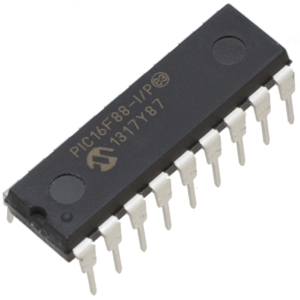 Break IC PIC16F88 Data
Break IC PIC16F88 Data
Break IC PIC16F88 Data
This document contains device specific information for the operation of Break IC PIC16F88 Data. Additional information may be found in the PICmicro® Mid-Range MCU Reference Manual (DS33023) which may be downloaded from the Microchip website.
This Reference Manual should be considered a complementary document to this data sheet, and is highly recommended breaking for a better understanding of the device architecture and operation of the peripheral modules.
The PIC16F88 belongs to the Mid-Range family of the PICmicro® devices. Block diagrams of the devices are shown in Figure 1-1 and Figure 1-2. These devices contain features that are new to the PIC16 product line:
· Low-power modes: RC_RUN allows the core and peripherals to be clocked from the INTRC, while SEC_RUN allows the core and peripherals to be clocked from the low-power Timer1.
· Internal RC oscillator with eight selectable frequencies, including 31.25 kHz, 125 kHz, 250 kHz, 500 kHz, 1 MHz, 2 MHz, 4 MHz, and 8 MHz. The INTRC can be configured as a primary or secondary clock source.
· The Timer1 module current consumption has been greatly reduced from 20 µA (previous PIC16 devices) to 1.8 µA typical (32 kHz at 2V), which is ideal for real-time clock applications.
· Extended Watchdog Timer (WDT) that can have a programmable period from 1 ms to 268s. The WDT has its own 16-bit prescaler.
· Two-Speed Start-up: When the oscillator is configured for LP, XT, or HS, this feature will clock the device from the INTRC while the oscillator is warming up. This, in turn, will enable almost immediate code execution.
· The A/D module has a new register for PIC16 devices named ANSEL. This register allows easier configuration of analog or digital I/O pins.
